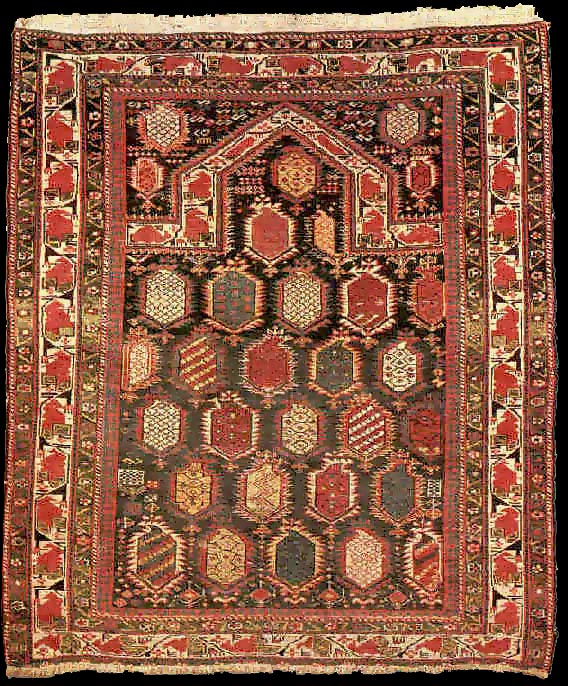|
A mid 19th century Shirvan Marasali
prayer rug, Azerbaijan, the Skinner Auction in Boston, December 9, 1995
|
|
The star of the sale was probably a Marasali prayer rug, Lot 91, that the
reviewer confesses to have overlooked during the preview. At passing glance,
it looked much like any other "black Marasali," as the type is known, with
angular, flame-edged botehs on a deep indigo field and with characteristic
border of red knight-like figures on a white ground. Since it carried an
unassuming estimate of $2,000 to $3,000, it was easy to suppose there was
nothing special about this rug and to pass it by. People who took a close
look apparently discovered otherwise, however, since after lively bidding it
finally sold for $17,250, by far the highest price paid for any Caucasian in
the sale.
In retrospect, the piece seems to have been distinguished by the
spaciousness of its design. The botehs in Marasali prayer rugs are usually
closely packed, which creates an almost electric effect. Probably the best
example to have come up in recent years was a silk-wefted one that sold as
Lot 89 at Sotheby's on December 15, 1994, bringing $21,850. In the tightness
of its composition and brilliance of its colors, it positively sparkled. The
Skinner piece was more open in its design -- that is, with more space
between the botehs -- than the Sotheby's example or others commonly pictured
in the literature, and that feature along with crisp drawing may have
attracted collectors.
 |

